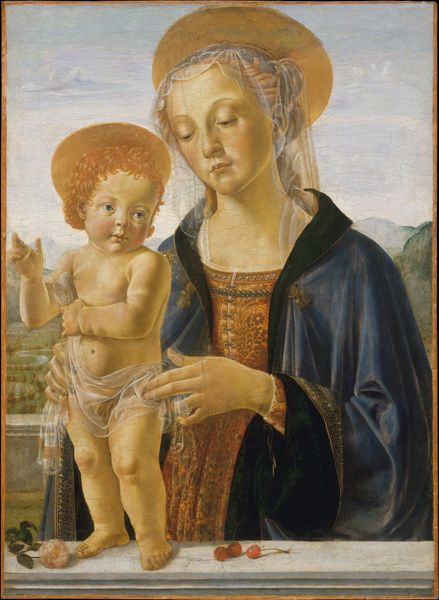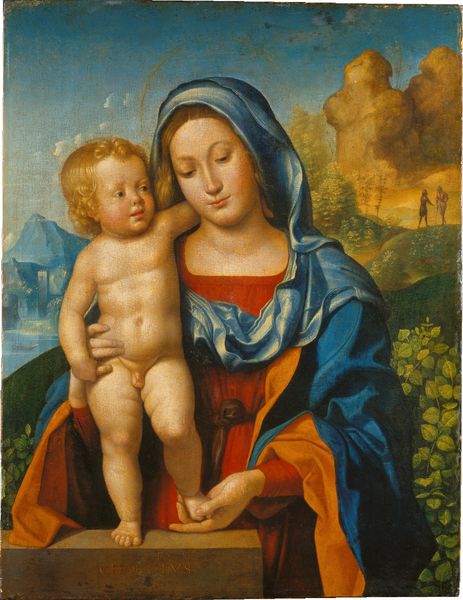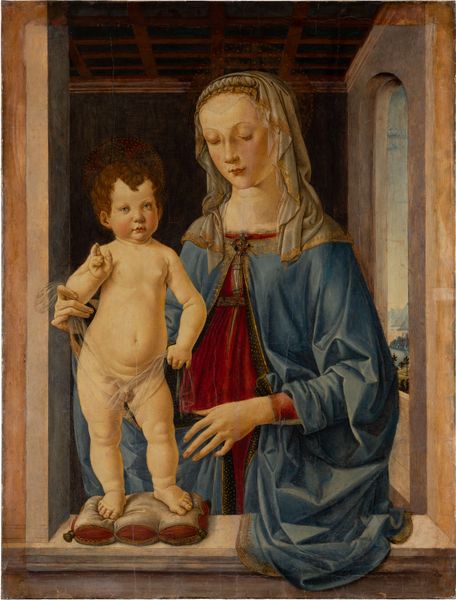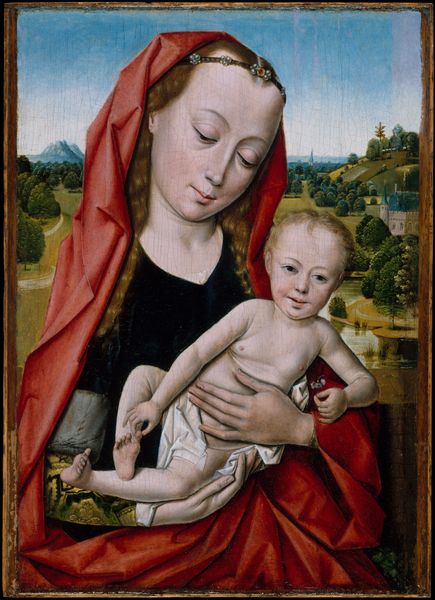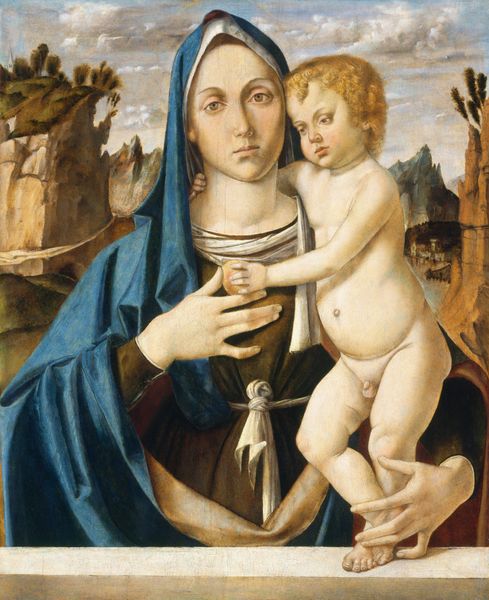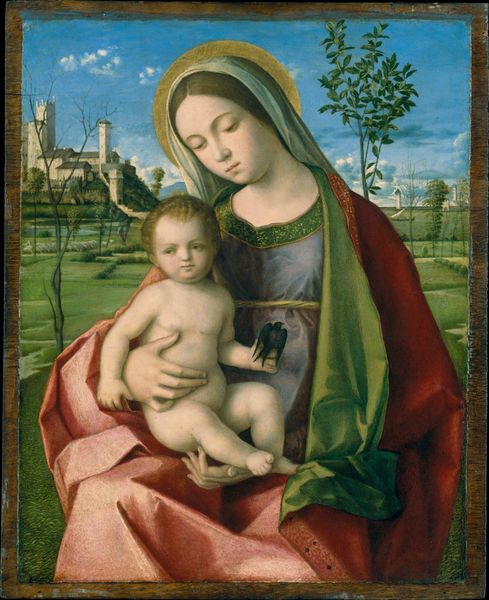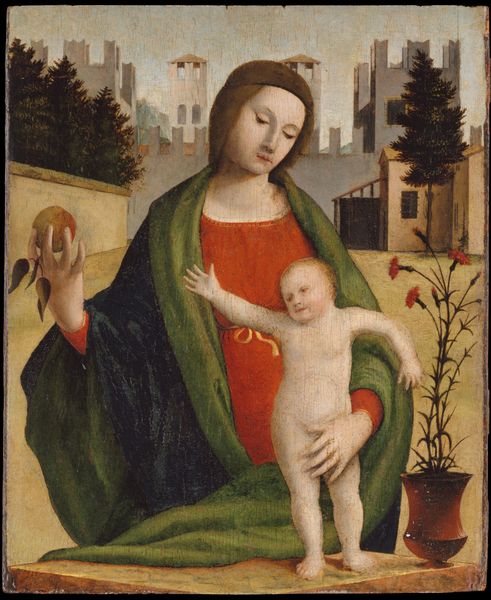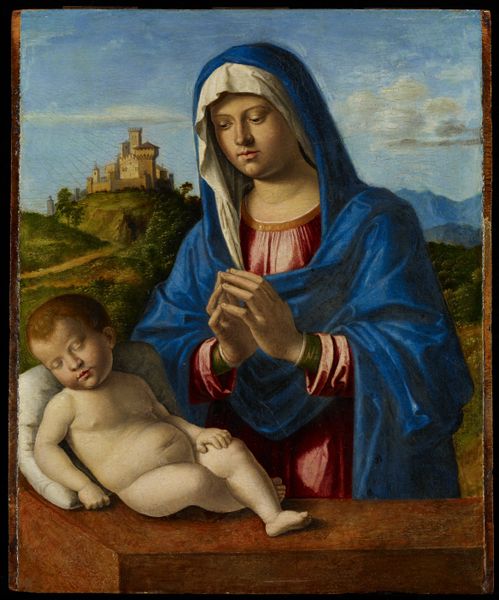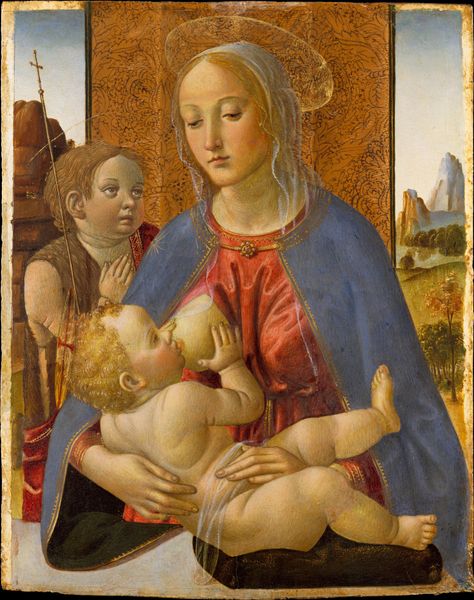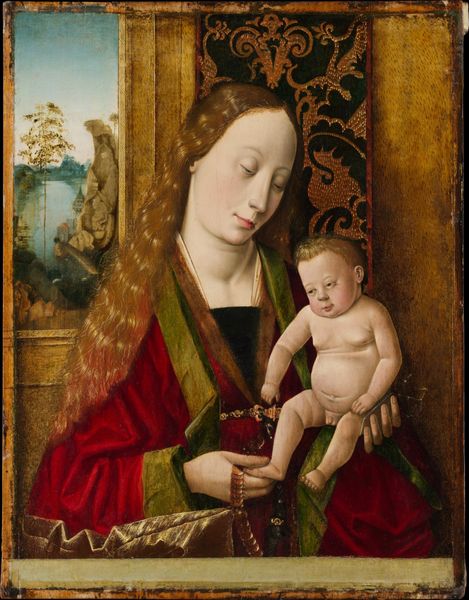
tempera, painting, oil-paint
#
portrait
#
tempera
#
painting
#
oil-paint
#
landscape
#
madonna
#
oil painting
#
child
#
history-painting
#
italian-renaissance
#
early-renaissance
Dimensions: 21 1/4 x 15 3/4 in. (54 x 40 cm) (31 x 26 inches framed)
Copyright: Public Domain
Curator: Standing here, we're looking at Giovanni Bellini's "Madonna and Child," created between 1467 and 1473. The painting, using tempera and oil on wood, resides here at The Met. Editor: My first impression? It's…stately. Even the landscape feels carefully arranged, almost like a stage setting. There’s an undeniable coolness, a restrained emotion. Curator: Absolutely. Consider the context. Bellini operated in a world deeply shaped by the patronage system. Commissions from wealthy families and religious institutions heavily influenced the subjects, styles, and even the scale of artworks. So, these representations of piety and serenity had a purpose beyond the purely artistic. Editor: And what do you make of Mary's gaze? It's directed away from Jesus. I find that refusal to make eye contact… significant. She looks almost mournful. What statement does that make about women, motherhood, and societal expectations? Is she trapped, performing for an audience then as women are performing still now? Curator: It could certainly be interpreted that way. Renaissance art frequently employed symbolism to convey layers of meaning. Mary's gaze might also signify a premonition of Christ's future sacrifice, adding a layer of somber reflection, the artist highlighting this in contrast to the common depictions of mother and child relationships in the period. Editor: The orange garland is striking to me as well. Some would argue that it refers to the fruit of paradise and also signifies the sweetness of maternal love. It speaks about nature providing sustenance. But looking from our historical viewpoint it would also raise the problem of wealth acquisition for that time and its unequal division among social classes. Curator: An intriguing reading. And Bellini's technique! Observe the delicate gradations of light, the almost photographic detail. His innovation greatly shaped Venetian painting. But, he also had predecessors and competition. What makes his work memorable is difficult to put your finger on... Editor: The figures almost seem removed from lived reality, elevated. That kind of untouchability, that idealization, serves specific interests, wouldn't you agree? It is hard to pinpoint though. Curator: Precisely. So much to think about. It gives this piece power as we discuss what Bellini had to convey. Editor: Indeed. An image crafted in the past continuing to challenge our viewpoints in the present.
Comments
No comments
Be the first to comment and join the conversation on the ultimate creative platform.
